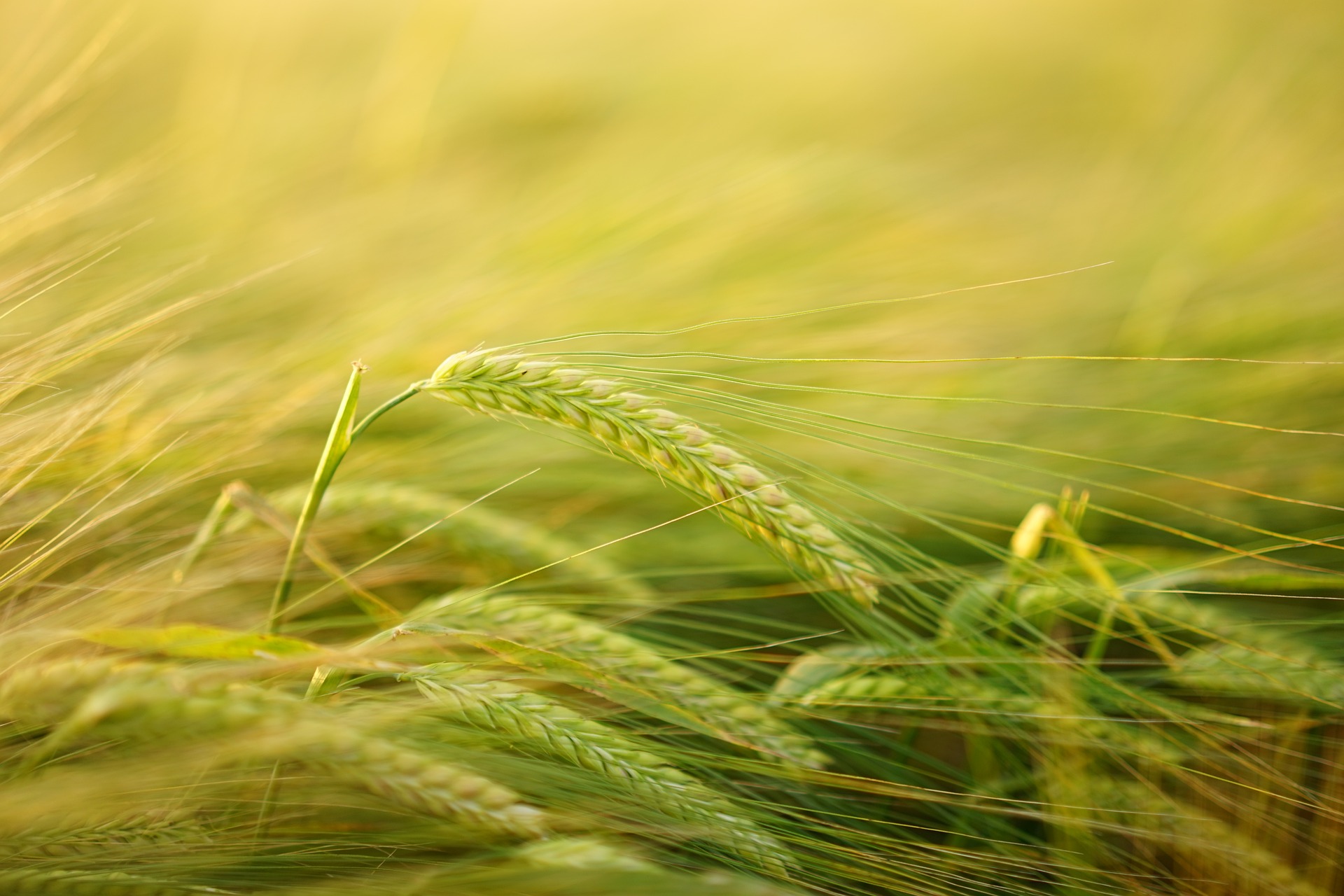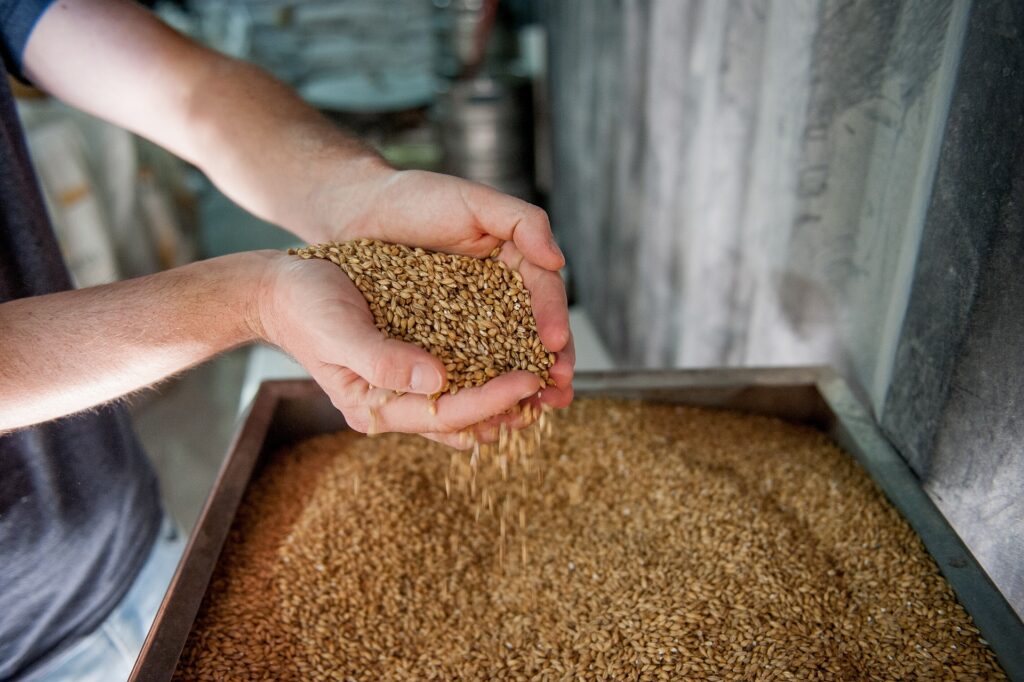In today’s “ingredient spotlight” we’ll be looking at barley. Specifically, we’ll be exploring malted barley. Along with hops, malted barley is one of the ingredients that gives beer its unique flavour. Barley is one of the four key ingredients for beer along with water, hops and yeast (according to the Reinheitsgebot or German Beer Purity Law).
What is barley?
Barley (Hordeum vulgare) is a type of grass that has long been a staple cereal crop for humans. According to Oxford University Press, barley was probably domesticated for farming use around 10,000 years ago in Eurasia. Since this time, it spread across the globe, providing sustenance on most continents and making up a major part of the diets of ancient Egyptians, Mesopotamians, Greeks, Romans and most modern civilizations. These days it is used not only as a human food but also as a crucial feed for livestock.
Barley is a prized crop for farming for many reasons. Firstly, while it grows best in temperate climates, it also thrives in areas with less than ideal weather. In comparison to other cereal crops, it is more resistant to cold, heat and dry conditions. It also has a shorter growing and maturation time (around 90 days) which means it can be grown in short windows almost anywhere in the world.
Barley has a nutty flavour which can vary according to how it is prepared. It is also a great source of calories and contains carbohydrates, proteins, calcium, phosphorus and B vitamins. How barley is prepared varies vastly by region: the seeds can be used to make flour, different types of bread, eaten in soups or made into a type of polenta. The stalks of the plant are also a useful source of straw for building, animal feed etc.
Barley is one of the biggest grain crops by volume in the world and is an essential part of the international food supply. As such, many countries grow barley, with the five biggest producers in 2022 being: the European Union (51 million metric tons), the Russian Federation (26 million metric tons), Australia (14 million metric tons), Canada (10 million metric tons) and Turkey (7 million metric tons).
Barley for brewing beer
Barley, of course, has another important use – brewing beer! For brewing purposes, malted barley is needed. But what on earth is malted barley?
Malted barley is simply barley grains that have been allowed to germinate by soaking in water and then dried in a kiln. During this process, the barley’s enzymes are activated, converting its starches into simple sugars that are easily fermentable by yeast.
The malting process also develops flavours and aromas that are essential to the beer’s taste profile. The degree to which the malted barley is kilned can vary, resulting in different levels of flavour and colour in the final beer. For example, lightly kilned malt produces a pale beer, while heavily kilned malt produces a darker beer with a more robust flavour profile.
Before brewing, malted barley is typically crushed into a coarse powder called “grist,” which is then mixed with hot water in a process called mashing. During mashing, the enzymes in the malted barley convert the starches in the grist into fermentable sugars. The resulting liquid, called “wort,” is then boiled with hops to add bitterness and aroma to the beer.
After boiling, the wort is cooled and yeast is added to begin fermentation. The yeast consumes the sugars in the wort, producing alcohol and carbon dioxide. The resulting beer can then be aged, carbonated, and packaged for consumption.
While it is certainly possible to malt your own barley at home, this is generally not common practice for home brewers, rather, home brewers will buy barley already malted. Depending on your preference it is often possible to get your supplier to also crush your barley (and other grains) into a grist of your preferred size.
CHECK OUT: How To Carbonate In Mini Kegs
Types of Malted Barley
There are several styles of malted barley that are commonly used in brewing, each with its unique characteristics. Here are some of the most popular styles:
Pale malt: This is the most common type of malted barley used in brewing. It is made by kilning barley at a low temperature to retain its light colour and delicate flavour. Pale malt is often used as a base malt in beer recipes because it provides a neutral flavour and plenty of fermentable sugars.
Munich malt: This malt is kilned at a slightly higher temperature than pale malt, giving it a light amber colour and a toasty, biscuity flavour. Munich malt is often used in German-style lagers and ales, where it can contribute to the beer’s malty sweetness and complexity.
Vienna malt: Similar to Munich malt, Vienna malt is kilned at a higher temperature, giving it a slightly darker colour and a richer flavour profile. Vienna malt is often used in amber and brown ales, where it can contribute to the beer’s nutty, caramel notes.
Crystal malt: This style of malt is made by roasting the barley until it caramelises, producing a range of colours from light amber to dark brown. Crystal malt adds a sweet, malty flavour to beer and can contribute to its colour and body.
Chocolate malt: Chocolate malt is made by roasting barley at a high temperature, producing a dark brown colour and a rich, roasty flavour with hints of coffee and chocolate. Chocolate malt is often used in stouts and porters, where it can contribute to the beer’s dark colour and bold flavour.
Roasted barley: Roasted barley is kilned at an even higher temperature than chocolate malt, resulting in a black colour and a heavily roasted, bitter flavour. Roasted barley is often used in stouts, where it can contribute to the beer’s roasted, coffee-like notes.
These are just a few of the most common styles of malted barley used in brewing. Brewers can also use specialty malts, such as smoked malt or rye malt, to add unique flavours and aromas to their beer.
Read Next: How To Find The Best Materials For Beer Koozies
Aside from being a food staple on tables around the world, barley is a crucial ingredient for beer after it has undergone the malting process. With many different styles of malted barley available there’s almost endless possibilities in the styles of beer you can drink and brew. If you’re a brewer, the next time you’re at the home brew supply store, ask to check out the different varieties – the rich aromas will surely inspire your next home brew beer recipe!
Cheers!
Read Next: The Best Foods To Pair With Cold Beer





